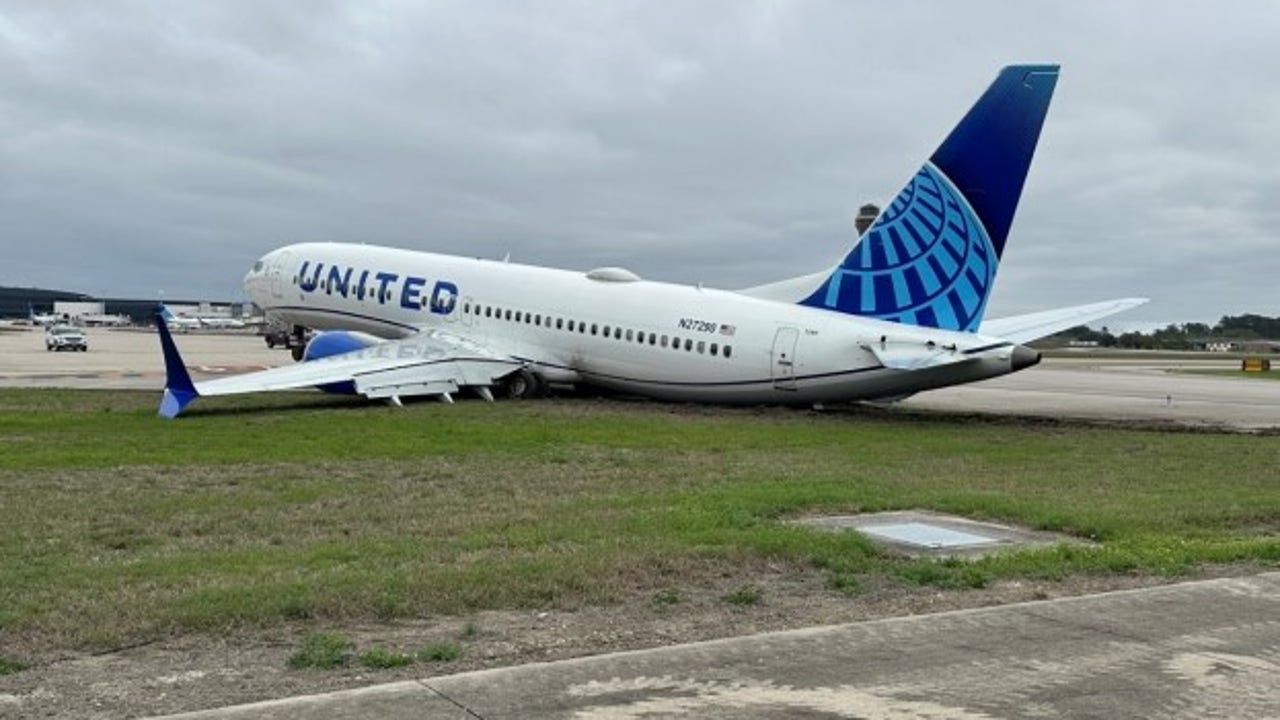United Airlines plane slid off runway at Bush Airport due to pilot error: NTSB report
A recent report from NTSB reveals what went wrong on a United Airlines flight landing at Bush Airport in Houston that caused it to slide off a runway. The National Transportation Safety Board (NTSB) has released a report on the March 8 incident involving a United Airlines plane that slid off the taxiway at Houston George Bush Intercontinental Airport. The NTSB claims that the plane's left main landing gear (MLG) departed the paved surface and hit a concrete structure that was recessed into the ground, resulting in its separation. The captain of the plane became concerned after the runway awareness and advisory system (RAAS) alert indicated that 1,000 ft of runway distance remained, even after he applied the brakes manually using the toe brakes at about 6,000 feet from the end of the runway. Despite this concern, the captain attempted to turn onto taxiway SC, using the steering tiller and rudder pedals while pushing aggressively on the brake pedals.

نشرت : قبل عام بواسطة FOX 26 Digital في Travel
The National Transportation Safety Board has released a report on their investigation of the United Airlines plane skidding off the taxiway at Houston George Bush Intercontinental Airport.
On March 8, United Airlines flight reports UA2477 landed and the Boeing 737 Max exited the taxiway into a grassy area.
NTSB claims the left main landing gear (MLG) departed the paved surface and contacted a concrete structure that was recessed into the ground, resulting in its separation.
SUGGESTED: United Airlines flight lands in Houston after flames seen coming from engine
The flight which departed from Memphis had 160 passengers and six crew members onboard, United Airlines says.
In the report, it was discovered, initially, that the touchdown was "uneventful, at an appropriate speed, and within the touchdown zone."
Shortly after landing, the airplane slid off the runway and the left main landing gear tires and nose wheels tires entered the grass before the airplane came to a rest with its left wing low.
Authorities investigated the site and found the tires hit a large concrete "manhole" designed as an electrical junction box for lights/utilities at the airport. Due to this hit, the left MLG separated from the plane at the fuse pins near the rear spar, as designed, to prevent more severe damage to surrounding structures.
However, prior to this, it was reported the captain of the plane became concerned after the runway awareness and advisory system (RAAS) alert indicated 1,000 ft of runway distance remained even after he applied the brakes manually using the toe brakes at about 6,000 feet from the end of the runway. He reportedly felt as if the deceleration was less than normal.
Investigators state, "DFDR data and automatic dependent surveillance-broadcast (ADS-B) data indicated that after the disabling of the auto brakes occurred, manual braking did not begin until the airplane was about 4,000 feet from the end of the runway."
FOX 26 Houston is now on the FOX LOCAL app available through Apple TV, Amazon FireTV, Roku, Google Android TV, and Vizio!
The captain applied more pressure to the brakes and attempted to turn onto taxiway SC, by using the steering tiller and rudder pedals while pushing aggressively on the brake pedals.
While turning into the taxiway, he told NTSB officials he felt the fuselage and rudder/brake pedals begin to shake violently and briefly released the brake pressure and the shaking ceased.
He reapplied aggressive brake pressure and the shaking continued before sliding off the runway.
NTSB investigators report from surveillance video, the runway and taxiway surface conditions were wet.
المواضيع: Aviation, Airlines
